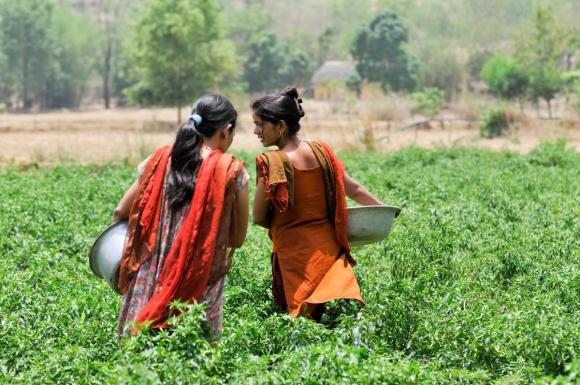CGIAR on Engaging Possible Stakeholders in Nepal

The CGIAR Research Program (CRP) Phase-I is about to end very soon and Phase-II will be starting from 2017. CGIAR centers (Bioversity, CIFOR, CIMMYT, ICARDA, IRRI, IFPRI and IWMI) all working together in Nepal with the vision of freedom from poverty; hunger and environmental degradation were the organizers of a day long Consultation Meeting on Site Integration of CGIAR on 11th January, 2016
The main objectives of sharing current CGIAR research activities in Nepal was to receive better insights/views of different research priorities of the stakeholders so as to run smoothly the next phase and have better impact on the research activities. There was a significant participation from the research scientists, CGIAR centers, non-government agencies with very few representation from women and private sectors.
During the meeting, the welcome speech was delivered by Dr. Arun K. Joshi from CIMMYT who briefed participants the reason(s) behind the consultation meeting. CGIAR has been working in Nepal and the consulatitive meeting aimed at seeking what could be added to achieve more practical impacts in the line of CGIAR’s mission and vision. This was specifically by seeking insights from the participants at the meeting.
Dr. Bhuwon R. Sthapit from Bioversity International overviewed CGIAR, its approaches and partnership across the world. He also presented the strategy and result framework of CGIAR for 2017-2022 with a special request from different stakeholders to give strategic suggestions in the CGIAR priority areas of genetic improvement, good nutrition and health and climate-smart agriculture among others. Next, his colleague, Dr. Devendra Gauchan gave a presentation on the list of ongoing projects, their working areas, modality, partners, and recent achievements of all the seven CGIAR centers operating in Nepal.
The Consultative Meeting Discussions
The discussion was led in two sessions- Stakeholder discussion I: How could current activities be better aligned and stakeholder discussion II: How could stakeholders’ need be better targeted? Different discussants focussed on different issues as thus;
- Dr. Prachanda Pradhan, patron of Farmer-Managed Irrigation System Promotion Trust raised the issue about the working module inquiring whether it operates in project mode or in core funding programs given the prevalence of donor driven research.
- Dr. Tek Bahadur Gurung, Director, National Animal Research Centre focused more on research in livestock and fishery
- Dr. Min Poudel, National Gene Bank focussed on the impact study of the CGIAR system research in Nepal.
- Dr. Bal Krishna Joshi, National Gene Bank, focussed more on the CGIAR gene bank being less supportive and not giving due care for Nepal’s gene bank.
- Dr. Meeta Pradhan, Director of The Mountain Institute focussed on the issue and the role of medicinal and the aromatic plants to uplift livelihoods mountain people
- Dr. Madhav Pandey, Assoc. Prof. from Agriculture and Forestry University requested for the collaboration among CGIAR centers and universities to bring better impact on academic professions.
- Dr. Y.R. Pandey, Executive Directior of NARC focused on more discussion and better coordination so that NARC could get expertise and technologies from CGIAR.
Demand driven research, capacity building in research, impact based projects, more focuses on neglected crops, integrated approach in research, new research themes like horticulture, poultry, livestock, more utilization of Nepal’s genetic materials for research, mechanization were the main points gathered as further guidance.
My Views
To begin with, Nepal’s political structure is changing with the recent promulgation of the new constitution. In this changing scenario, it will be difficult for the CGIAR to work with different states. From the discussions that ensued and previous experience, the researches performed are mainly donor based and are hence prone to problems of research replication with poor database management system rendering the impacts assessments of the CGIAR ineffective and poor.
After my graduation,I am working in an agriculture media house where my role is to disseminate agri-technologies that farmers could adopt. There are many things going around but the media outreach is also poor and it is very difficult gather information from their activities. The agricultural universities where the agri-manpower is developed have little knowhow of the CGIAR research. They lack resources for the university’s graduate students which is a lost opportunity as helping them will result into skilled scientists hence creating cumulative multiplier impacts later.
I feel more budgets should be made available in research more than in management. Until and unless, there would be provisions for collaboration and engagement of stakeholders, impact is impossible. So, for change to be evidenced, all players need to come together together.
Learn more about the youth's involvement in GCARD3 process and global event.
Photo Courtesy: CCAFS
Related Posts
Comments
By accepting you will be accessing a service provided by a third-party external to https://archive.ypard.net/

